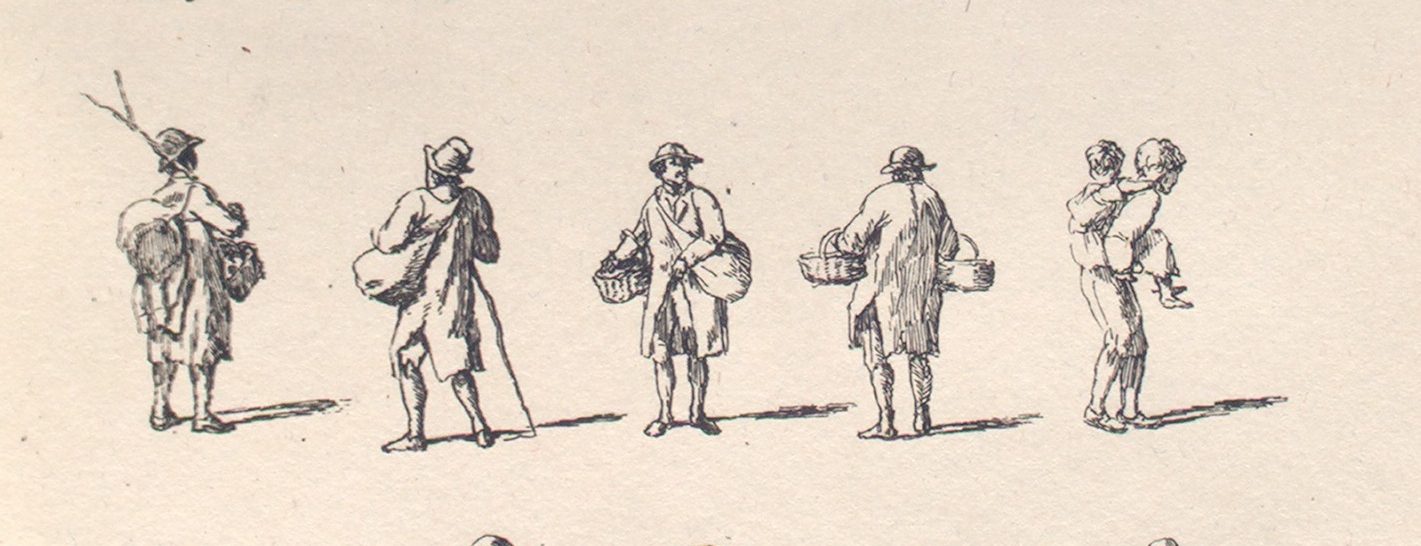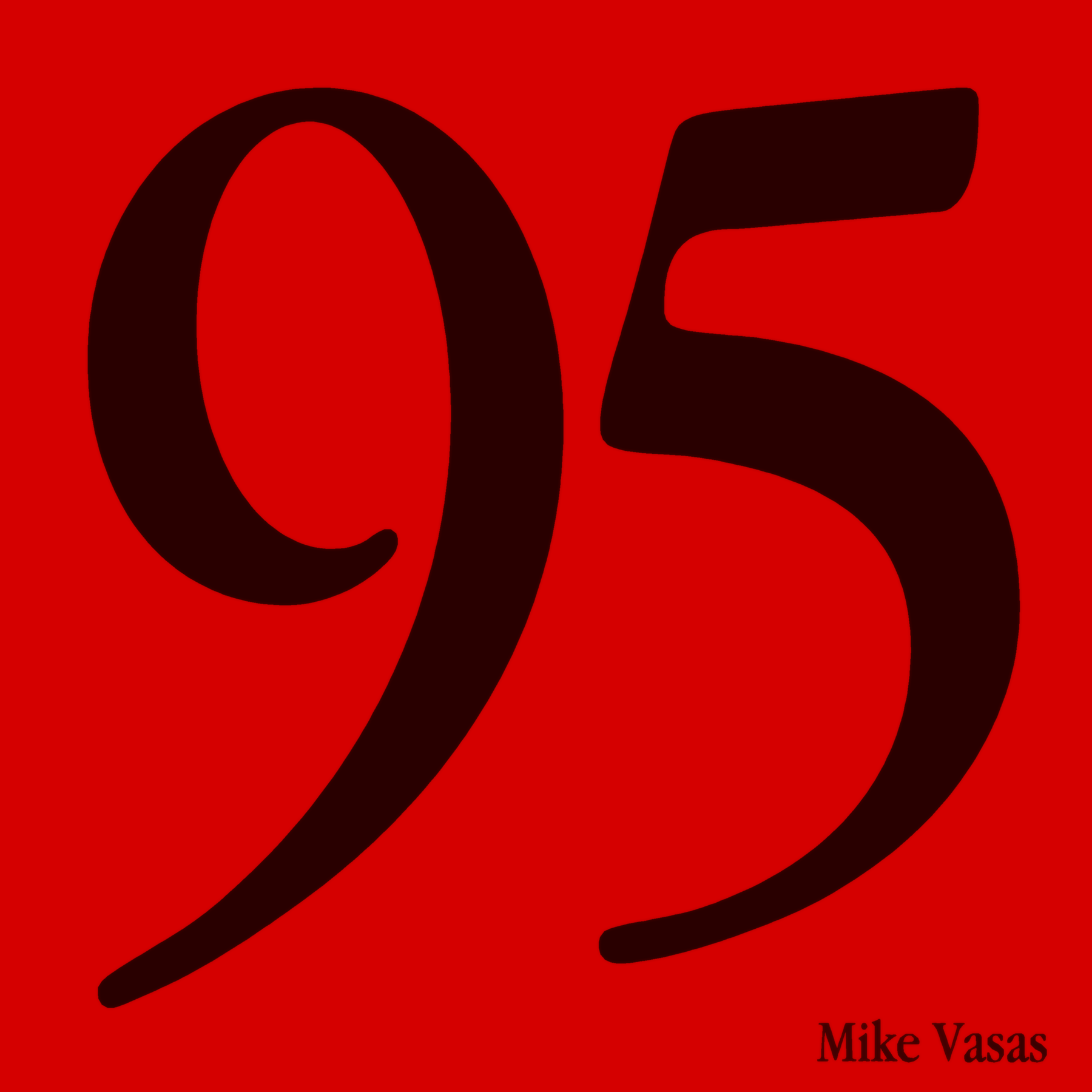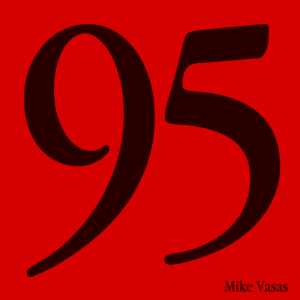95
Mike Vasas
October, 2017
GRHL29
Written in commemoration of the 500th Anniversary of the Lutheran Reformation
31 October, anno Domini 2017
“Out of love for the truth and from desire to elucidate it…
With this opening, the Catholic monk Martin Luther began what is now known as The 95 Theses. The document was intended to initiate discussion and debate on the topic of indulgences within the Christian Church. Instead, subsequent translations and reprinting of The 95 Theses led Luther’s excommunication and a schism that would forever change Christendom.
The 95 Theses, originally mailed on October 31, 1517 to the Archbishop of Mainz, is the start of what is known today as the Reformation. Driven from a Catholic tradition, Luther and his followers dove deep into Scripture and re-centered theological focus on work not of man, but of God. What started as a document on specific abuses became a theological movement based on the concepts of Faith Alone, Grace Alone, Christ Alone and Scripture Alone.
To commemorate the 500th anniversary of this document and of the birth of the Reformation, 95 is composed as a meditative piece on time itself; 500 years of God’s work since The 95 Theses and 2017 years since the birth of Christ.
A downloadable score, audio and essay are available at: http://archive.org/details/mike_mikevasas_95
Compositional and Performance Notes
The composition’s pitch content is organized around tones that represent the above central concepts of Christianity; Faith Alone (F, A), Grace Alone (G, A), Christ Alone (C, A) and Scripture Alone (E, A). By limiting the pitches to those that represent the Reformation elements and organizing the repetitions around that of passing of time, 95 allows the listener to meditate on God’s work “out of love for the truth and from desire to elucidate it.”
The glockenspiel, French horns and hammered dulcimer each perform the pitches in strict order: F, A; G,A; C,A; and E,A. The instruments repeat their phrases 95 times with various rhythms and cadences. The cellos perform the same pitch group with a harmonic arrangement and also do so 95 times. Musicianship concepts (such as when to start, how long to rest, dynamics, accents, etc.) are chosen by the performer(s). A digital looping system could also be implemented to allow a more precise repetition of parts and possibly to allow for the piece to be played by one multi-instrumentalist.
The pitch order of the organ-pedal part is the same as the other instruments, yet it differs by sustaining each pitch for 95 seconds and repeating four times to connect with the four pairs of F,A (Faith Alone); G,A (Grace Alone); C,A (Christ Alone) and E,A (Scripture Alone). At the end of these four repetitions, the organ pedal remains on F, representative of Faith, until the other instruments complete 95 repetitions.
A sample of the bell from Wittenberg, Germany’s All Saint’s Church (the site of document’s introduction) rings in pairs for 250 repetitions for a total of 500 total tolls. If a real bell is implemented a preferred pitch of D is suggested, but not required. As with the above instruments, the first entrance is not specified.
The piano part begins the piece and is the driving instrument behind the concept of time. It is a looped chord; FGACE. The looped chord is repeated 2,017 times to represent the passing of time to the current day. Variation occurs by having individual pitches within the chord sustain in unequal durations. As the 2,017 repetitions slowly move out of phase, time and rhythm appear dispersed and individual pitches become arpeggiated in evolving meters and accents. The piece continues after the piano completes its 2,017 repetitions to represent time’s movement into the future. This performance would be best implemented with a digital player piano. This effect could also be achieved with five pianos, each with a digital looping system or precise performers.
95 addresses obscurity and misinterpretation within Christian doctrine. Each repetition of the piano chord represents a year in time; anno Domini. At approximately 1,000 piano repetitions, the original acoustic musical content begins to be obscured by electronic effects chosen by the performers. The sound is new and foreign, and eventually cross-fades with the original content by approximately1,200 repetitions. The original material appears almost inaudible and distant.
This transition is notable because the “new sound” is actually the original sounds processed to the point of obscurity. The original material is slightly audible and appears out of reach; much like misunderstood doctrine. At approximately repetition 1,517, the original content returns and overpowers the effected sound. The original instruments, still repeating and phasing, continue onward to the conclusion of the piece.
As mentioned above, 95 is composed as a meditative piece on time itself; 500 years of God’s work since The 95 Theses and 2,017 years since the birth of Christ. The listener’s perceptions; time and repetition, lucidity and obscurity, are central to understanding 95 but not central to appreciating it. This commemorative work is meant for meditation to highlight the ideas of the Reformation “out of love for the truth and the desire to elucidate it.”
– Michael R. Vasas, October 31, 2017
Copyright © 2017 M. Vasas. All Rights Reserved.
A downloadable score, audio and essay are available at: http://archive.org/details/mike_mikevasas_95




Leave a Reply
You must be logged in to post a comment.